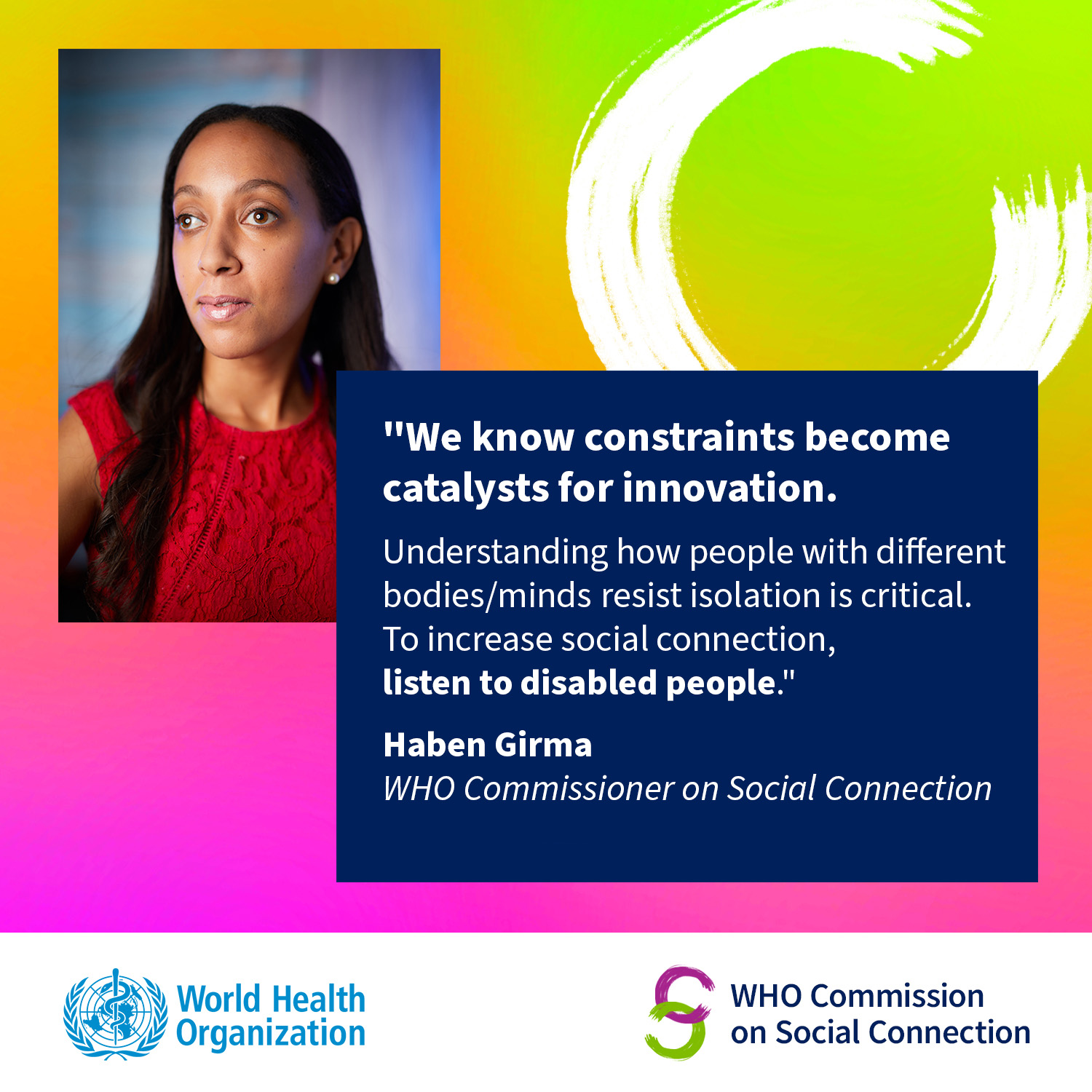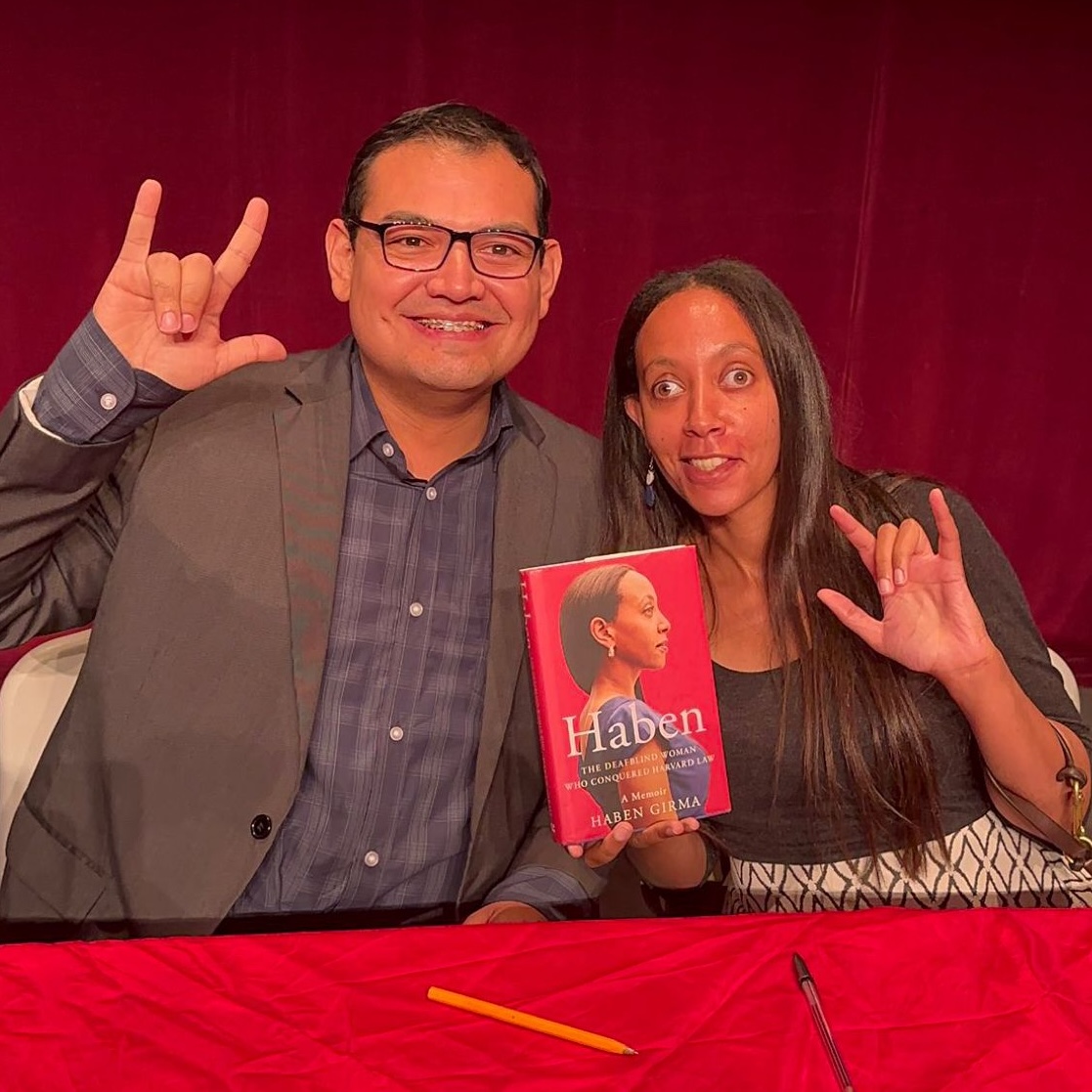Inspiration should lead to action. A blind woman who invented Tibetan Braille and overcame political red tape and ableism, Sabriye Tenberken both role models and teaches social impact. Want to start an NGO? Need help finding donors? Want advise navigating oppressive bureaucracy? Take the course at Kanthari, this social impact institute I was very lucky to visit!
Visit kanthari.org and follow @kanthariTV.
Descriptive Transcript
(The video starts with Haben Girma, a Black woman in her thirties with an American accent, sitting in a large auditorium. Behind her is a stage with a sign that says Kanthari.)
Haben: I know there are many people out there who want to change the world, who have excellent ideas that are going to help people. But maybe you’re not sure exactly how to do that.
(A photo of Paul Kronenberg, a tall white man in his fifties who looks thoughtful as he types on a keyboard propped on his lap. Haben sits across from him with a braille display on her lap. They’re both beneath an open-air thatch domed gazebo, surrounded by a vibrant green forest.)
Haben: I’m currently at Kanthari in South India. It’s an organization to teach dream-makers on how to create organizations that help communities.
(A photo of Haben and Kantharis — a multigenerational group of people from different countries, gathered around a long table: Chacko Jacob, Riya Orison, Surji SI, Malak Alamar, Cornelia Tenberken (Sabriyes mother), Aanand Nagvanshi, Sara Tandel, and paul — smiling as Sabriye Tenberken speaks.)
Haben: Sometimes it’s about disability access, sometimes it’s about the environment. All of us have ways we can help our communities, and we should take time to learn how to do that.
(A photo of Paul, Sabriye, Cornelia, Haben, and Haben’s Seeing Eye dog Mylo sitting in the gazebo, enjoying coffee and cookies.)
Haben: There are scholarships to help people who want to take this course. So if you’re interested in learning how to help your community, please go to kanthari.org.
(Sabriye and Haben are sitting next to each other in the auditorium. Sabriye is a white woman in her fifties with a German accent.)
Sabriye: So today we are so lucky that we have Haben here from the U.S. and a lot of our Kantharis talked to her already and they are so inspired by her words, by her story, by her history. And yeah, I cannot say how glad we are and how lucky we are to welcome you here in the, in Kerala, the south of India.
Haben: It is an absolute honor to actually meet you! I read about Sabriye’s story when I was a kid. She wrote a book called “My Path Leads to Tibet,”
(A photo of the book cover showing Sabriye holding her cane, and kneeling beside a child. The text says, “My Path Leads to Tibet: the Inspiring Story of the Blind Woman Who Brought Hope to the Children of Tibet.”)
Haben: and I learned about a blind woman from Germany who went to Tibet and helped build a school. And I realized when I grow up, I could also help blind and disabled people around the world. And today, I am meeting one of my heroes —
(Sabriye blushes and laughs.)
Haben: at her institute, where she is training more students to learn how to change the world, how to help their communities. What do you recommend people do?
(Text appears on screen: “to support: go to www.kanthari.org.”)
Sabriye: If you want to support us financially, you’re always welcome. But for example, you can also spread the news and ask people who have dreams for social change to apply. And of course, if you have any skills that are helpful, why not coming along and being a catalyst here in this program?
(A photo of Haben standing outside with four Kantharis Aanand from Delhi, Sara from Mumbai, Malak from Jordan, and Karan Singh from Nepal. Everyone is smiling. There is a brick wall and trees in the background.
Haben: They are going to be sharing their stories on December 15 and 16, and we hope you’ll be able to join in and tune in to catch these stories. Go to kantharitalks.org to register and be able to learn from change-makers from 11 different countries.

